 If you Google the definition of “Pandora’s Box,” the all-knowing internet oracle says the term means: “a process that generates many complicated problems as the result of unwise interference in something.” I love this expression, and I used it a few months ago when talking to the board president of a non-profit organization who was describing to me how they were handling a complaint about the agency’s executive director.
If you Google the definition of “Pandora’s Box,” the all-knowing internet oracle says the term means: “a process that generates many complicated problems as the result of unwise interference in something.” I love this expression, and I used it a few months ago when talking to the board president of a non-profit organization who was describing to me how they were handling a complaint about the agency’s executive director.
In a nutshell, the board president in question was approached by a staff member with a complaint. The board president asked the staff member to put the complaint in writing and agreed to take it to the entire board of directors.
While on face value, this might make sense because the executive director works for the board. I believe this opens the flood gates, and anytime staff have an issue they will now likely circumvent the executive director and go straight to the board.
My advice?
Don’t undercut your executive director like this. You might as well fire them if this is how you’re going to manage them.
With that being said, I bet there are many of you who are wondering what the right course of action should be. After all, it is a fiduciary responsibility of the board to hire and manage the executive director.
Here is how I suggest the board handles all staff complaints pertaining to the executive director:
- Immediately ascertain if the executive director has done something ILLEGAL, UNETHICAL or VIOLATES AN AGENCY POLICY.
- If the issue rises to the level of illegal, unethical or policy-related, reach for a bottle of Maalox or Pepto and ask for staff to put it in writing (and if illegal call the police and an emergency board meeting immediately!). Or more importantly, follow the written process if you one.
- If the issue doesn’t rise to this level, then politely turn them around and ask them to try working it out directly with the executive director. Explain that there is a process to follow and it starts with trying to first work it out with the boss. Empathize with their situation and express confidence that it can be worked out. Walk them through your agency’s policy/procedure. Explain the circumstances of when they might submit something to the board in writing after they try to work it out with the executive director (e.g. retaliation, etc). Be transparent. Be genuine. Empathize. But draw the line clearly.
- Circle back around to the executive director. Be transparent about what happened. Encourage them to work things out. Remind them of the importance of staff morale and the power of team. Remind them to stay within the agency’s policy boundaries. Express confidence in their abilities to solve the issue.
- Prepare for the worst case scenario.
Please don’t misread what I’m saying here. I did not just tell board volunteers to wash their hands of staff complaints unless it rises to the level of “illegal, unethical, or policy violation“. What I am saying is . . . not all complaints are equal and the ones that don’t rise to the level of illegal / unethical / policy violation should be handled in a way where you’re not undercutting your executive director.
Because . . .
If you choose to allow staff to circumvent the board’s one employee — the executive director — then you’re opening Pandora’s Box, and I guarantee that you won’t have an executive director for long. You will either fire them or they will quit.
There are some assumptions that I’m making about your agency when writing this blog post such as:
- You have adopted a written whistle blower policy
- You’ve adopted written policies defining and prohibiting retaliation
- Your employee handbook contain a written process outlining a complaint process and open door policy
- You’ve adopted a written ethics policy
Let me bottom line this complicated issue:
- You don’t want to undercut your executive director
- You don’t want to abdicate your fiduciary responsibilities to supervise the executive director and ensure the agency is well-run
- You want to think these things out in advance — proactive and not reactive
- You want written policies and procedures in place and you want to follow them (don’t be arbitrary or capricious in enforcing the rules)
- You don’t want to put the agency in a position to get sued
Is that it?
LOL . . . yeah . . . that’s it. Good luck!
Since we can all learn from each other. Please scroll down and use the comment box below to share your thoughts and experiences on this topic. Please also feel free to point your fellow non-profit professionals and board volunteers to awesome samples and online resources to assist them in managing risk.
Here’s to your health!
Erik Anderson
Founder & President, The Healthy Non-Profit LLC
www.thehealthynonprofit.com
erik@thehealthynonprofit.com
http://twitter.com/#!/eanderson847
http://www.facebook.com/eanderson847
http://www.linkedin.com/in/erikanderson847

 When I graduated college with my masters degree in Urban Planning in 1994, our country was still emerging from a small recession (you know the once that propelled Bill Clinton into the White House). Needless to say, government jobs in urban planning offices across America were still in short supply, and there were many people with much more experience waiting in line for jobs ahead of me. It was this economic dynamic that forced me to innovate, changing my job search parameters and propelling me into the non-profit sector.
When I graduated college with my masters degree in Urban Planning in 1994, our country was still emerging from a small recession (you know the once that propelled Bill Clinton into the White House). Needless to say, government jobs in urban planning offices across America were still in short supply, and there were many people with much more experience waiting in line for jobs ahead of me. It was this economic dynamic that forced me to innovate, changing my job search parameters and propelling me into the non-profit sector. I loved working for the Boy Scouts because I learned so much including:
I loved working for the Boy Scouts because I learned so much including: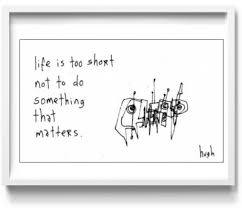 Look into your heart and understand your passions
Look into your heart and understand your passions When I decided to ask local non-profit organizations to use my blog platform to talk about some aspect of building loyalty with a particular stakeholder group, I sent out a ton of email requests to former clients asking them to consent to an interview or send me something in writing.
When I decided to ask local non-profit organizations to use my blog platform to talk about some aspect of building loyalty with a particular stakeholder group, I sent out a ton of email requests to former clients asking them to consent to an interview or send me something in writing. My first days (and those leading up to) as the Director of Operations for the
My first days (and those leading up to) as the Director of Operations for the  Team vs. Group
Team vs. Group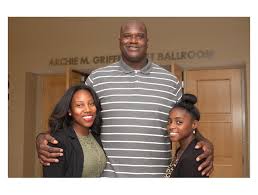 The first step I stress to all of my managers in building a loyal team is the importance of the interview process.
The first step I stress to all of my managers in building a loyal team is the importance of the interview process.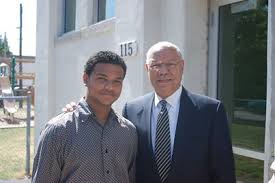 Once hired, make sure the new employee participates in an immediate on-boarding process and orientation to the organization.
Once hired, make sure the new employee participates in an immediate on-boarding process and orientation to the organization.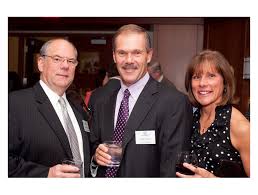 After the honeymoon phase and the initial adrenaline of starting something new, the “real work” is just beginning for the person managing a new employee. The staff manager has the unenviable job of figuring out how to retain talent and simultaneously build a team.
After the honeymoon phase and the initial adrenaline of starting something new, the “real work” is just beginning for the person managing a new employee. The staff manager has the unenviable job of figuring out how to retain talent and simultaneously build a team. While Boys & Girls Clubs of Columbus allows each of our five programs to have its own identity, we strive for something that we call a “One Club Feel.” This, to me, is the most important part of my job and truest test of my success (or failure) as a leader.
While Boys & Girls Clubs of Columbus allows each of our five programs to have its own identity, we strive for something that we call a “One Club Feel.” This, to me, is the most important part of my job and truest test of my success (or failure) as a leader.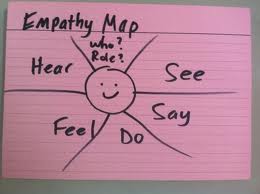 The regional VP and I would fly into the district office. We would first meet with the district Director, and then over the course of the next two days the VP, the Director, and I would meet with each station manager in a series of rather intense “three-on-one” station review meetings.
The regional VP and I would fly into the district office. We would first meet with the district Director, and then over the course of the next two days the VP, the Director, and I would meet with each station manager in a series of rather intense “three-on-one” station review meetings. If the meeting were today, I’m quite sure he would have explained his situation with a matter of fact “it is what it is” but that phrase wasn’t in popular use back then…
If the meeting were today, I’m quite sure he would have explained his situation with a matter of fact “it is what it is” but that phrase wasn’t in popular use back then… “Scott, can you speak more to why you think the drivers don’t respect you?”
“Scott, can you speak more to why you think the drivers don’t respect you?”
 “You don’t manage people; you manage things. You lead people.”
“You don’t manage people; you manage things. You lead people.”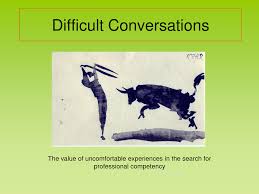 From time-to-time, we all need to have a difficult conversation with someone. It could be an employee, board volunteer, donor, collaborative partner, or even a spouse or loved-one. I was in such a position a few days ago, and needless to say it didn’t go very well. In the subsequent days, I spent a lot of time licking my wounds and thinking about what I could’ve done differently. So, I’ve decided to share some of my thoughts with the readers at DonorDreams blog and hope you’ll also share your thoughts and experiences.
From time-to-time, we all need to have a difficult conversation with someone. It could be an employee, board volunteer, donor, collaborative partner, or even a spouse or loved-one. I was in such a position a few days ago, and needless to say it didn’t go very well. In the subsequent days, I spent a lot of time licking my wounds and thinking about what I could’ve done differently. So, I’ve decided to share some of my thoughts with the readers at DonorDreams blog and hope you’ll also share your thoughts and experiences. I’ve done some research into how I can do better in the future with engaging others in these type of conversations. Here are just a few of the best practices that resonate with me:
I’ve done some research into how I can do better in the future with engaging others in these type of conversations. Here are just a few of the best practices that resonate with me: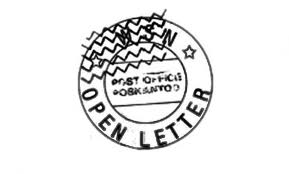 My online friend, Marc Pitman is hosting this month’s Nonprofit Blog Carnival and asks his fellow non-profit bloggers to write an open letter to executive directors in honor of President’s Day. For those of you who don’t know of Marc, he is well-known to friends and business associates as “The Fundraising Coach“. As the coach describes in his
My online friend, Marc Pitman is hosting this month’s Nonprofit Blog Carnival and asks his fellow non-profit bloggers to write an open letter to executive directors in honor of President’s Day. For those of you who don’t know of Marc, he is well-known to friends and business associates as “The Fundraising Coach“. As the coach describes in his 
 In my humble opinion, non-profit professionals have two choices:
In my humble opinion, non-profit professionals have two choices: “Grab a piece of paper. Make your best paper airplane.”
“Grab a piece of paper. Make your best paper airplane.” Often in these sessions, after one or two unsuccessful flights I see the “pilot” start adjusting the paper plane: a different fold there, a bending of the wings, sharper folds at the point… When I see this, I react —“Whoa!” What are you doing?”
Often in these sessions, after one or two unsuccessful flights I see the “pilot” start adjusting the paper plane: a different fold there, a bending of the wings, sharper folds at the point… When I see this, I react —“Whoa!” What are you doing?”